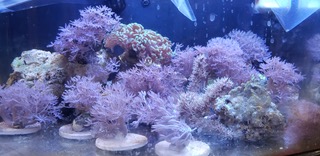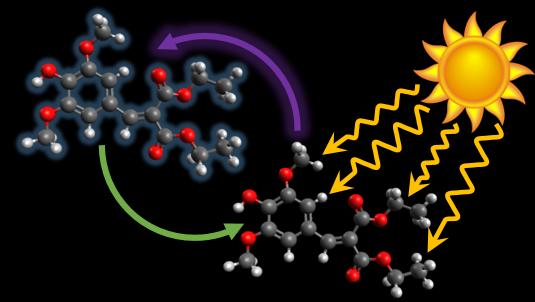Since metallic nanoparticles are now pretty much accepted as being relatively safe ingredients, I don’t write about sunscreens very often anymore. Of course metallic nanoparticles had to be rebranded as ‘minerals’ after some civil society groups raised a great fuss. (See my February 9, 2012 posting “Unintended consequences: Australians not using sunscreens to avoid nanoparticles?” for a rundown of the situation.)
This April 5, 2023 news item about a different kind of sunscreen ingredient on phys.org caught my eye,
An article published in the journal Cosmetics reports an investigation of the effects of including rosmarinic acid, an active antioxidant, in a sunscreen along with two conventional ultraviolet light filters, ethylhexyl methoxycinnamate (against UVB) and avobenzone (against UVA).
…
They don’t seem to have tested this new ingredient in any ‘mineral’ sunscreens but it seems an intriguing possibility. Here’s more about rosmarinic acid and why it may be a good addition to sunscreens from an April 5, 2023 Fundação de Amparo à Pesquisa do Estado de São Paulo (São Paulo Research Foundation; FAPESP) press release (also on EurekAlert), which originated the news item, Note: Links have been removed)
The research group increased the sunscreen’s photoprotective efficacy by adding rosmarinic acid at 0.1%, a very small proportion compared with those of conventional UV filters. They believe their findings suggest that incorporating natural molecules with antioxidant activities into sunscreens could decrease the proportion of conventional UV filters in the final product, with the advantage of providing other functional properties.
The product’s performance improved without the need to increase active principle levels, reducing both the amount of sunscreen needed to protect the same skin area and the volume of synthetic chemicals discharged into the environment.
In vitro and clinical trials obtained a 41% increase in sun protection factor (SPF). The higher the SPF, the more sunburn protection increases.
Another advantage of including rosmarinic acid was the addition of antioxidant activity to photoprotection so that the product could be used in antiaging cosmetics, for example.
“Our research on photoprotective systems aims primarily to evaluate potential sunscreen enhancement strategies. We’re interested above all in discovering ways to increase sunburn protection while also improving the stability of the product so that it remains safe and effective for longer,” said pharmaceutical scientist and biochemist André Rolim Baby, last author of the article and a professor at the University of São Paulo’s School of Pharmaceutical Sciences (FCF-USP) in Brazil.
“We’re also looking for products or systems with less environmental impact and ways of reducing the concentration of conventional filters by including natural ingredients that enhance the formulation. And we’re very interested in mapping other cosmetic properties of photoprotective molecules, such as anti-free radical action and protection of biomarkers in the outermost skin layers.”
Multifunctional compound
The investigation was part of a project supported by FAPESP to map chemopreventive properties of various UV filters.
In addition to being an antioxidant, rosmarinic acid, a natural polyphenol antioxidant found in rosemary, as well as sage, peppermint and many other herbal plants, has antiviral, anti-inflammatory, immunomodulatory, antibiotic and anticancer properties.
In a review article published in 2022 in the journal Nutrients, the research group highlighted the beneficial effects of rosmarinic acid as a food supplement, such as improvement in skin firmness and wrinkle reduction.
“In another investigation, we found potential benefits of rosmarinic acid for skin surface hydration, reinforcing the need for more research on the substance in the field of cosmetology,” Baby said.
…
Here’s a link to and a citation for the research team’s latest paper,
Photoprotective Efficacy of the Association of Rosmarinic Acid 0.1% with Ethylhexyl Methoxycinnamate and Avobenzone by Maíra de Oliveira Bispo, Ana Lucía Morocho-Jácome, Cassiano Carlos Escudeiro, Renata Miliani Martinez, Claudinéia Aparecida Sales de Oliveira Pinto, Catarina Rosado, Maria Valéria Robles Velasco and André Rolim Baby. Cosmetics 2023, 10(1), 11; https://doi.org/10.3390/cosmetics10010011 Published: 5 January 2023 (This article belongs to the Special Issue Feature Papers in Cosmetics in 2022)
This paper is open access.


